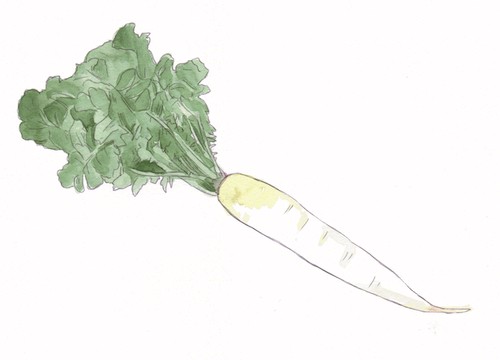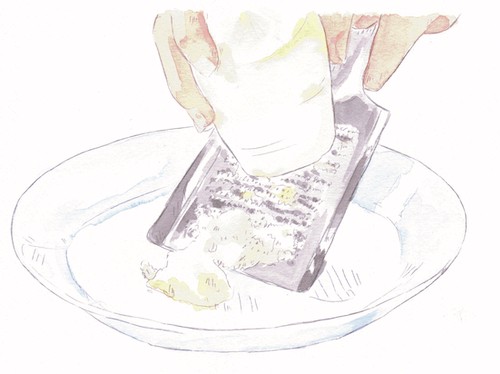
Photo: Digipub/Moment/Getty Images
It’s not what you might have guessed
My dad brought up the question at the dinner table: “What do you think is the most consumed vegetable in Japan?”
My sister chimed in: “Onions? Or potatoes maybe?”
“I think it could be cabbage. They use them in salads all the time.”
“Do soybeans count?”
According to a national survey in 2012 by the Ministry of Health, Labor and Welfare of Japan, none of these are correct. It’s daikon, or Japanese radish.
The Japanese radish
Excluding processed foods (i.e., potato chips or boxed juices), it turns out the most consumed vegetable in Japan is the daikon, measured by absolute weight. Based on the survey, on average Japanese people eat about 33. grams of this vegetable daily.
I never considered myself an avid consumer of daikon, so this fact surprised me a little bit. Onions and potatoes I would use in soups and stews, and I would often use shredded cabbage in my salads. But daikon didn’t even cross my mind.
So where is all this daikon consumption coming from?

Illustrations by Kaki Okumura
The daikon as a condiment
Upon closer self-reflection on my own eating habits, I soon began to see the small ways in which daikon would sneak into my meals. It wasn’t that daikon was necessarily the staple, but it would often be used as a condiment.
When served raw, daikons taste tangy and a bit sharp, and maybe even a bit peppery. Because of this, grated raw daikon is often used as a topping, to add a refreshing element to traditionally fattier foods. You can find it served on top of tonkatsu (Japanese pork cutlet), with agedashi-tofu (fried tofu in dashi soup), and sometimes served on top of mizore fish. Used in the summer, grated daikon is also a great topping for dishes like tempura, soba noodles, or as a garnish on top of sushi.
There’s a dish in Japan, called wafu-hambagu, which translates to “Japanese-style hamburger.” Unlike traditional burgers, it is topped with a sauce made of ponzu, noodle soup base, a bit of sugar, and of course, a hearty pile of grated daikon on top. Compared to its Western counterpart, it’s much lighter and refreshing, and traditionally served with a side of grilled vegetables.
So this is how the daikon radish sneaks into my meals.

Japanese vegetables as condiments
Rather than douse foods in condiments like ketchup, barbecue sauce, or mayo, in this way Japanese cuisine uses whole vegetables as condiments. Daikon’s sharp natural flavor becomes the sauce necessary to add an interesting savoriness when grated. And not just this, but daikon is full of fiber and nutrients — unlike traditional sauces, which often rely on sugar or oil.
Despite being low-calorie, daikon is surprisingly very nutrient-dense. It contains specific nutrients which help trigger the release of bile, which is used to break down and digest fats; is very high in vitamin C, a nutrient that is necessary for immune system function and healing; and is also rich in folate, a B-vitamin essential for red blood cell production and converting carbohydrates into energy. It seems there is credibility behind the ancient Chinese proverb:
Eating pungent radish and drinking hot tea lets the starved doctors beg on their knees.
The most consumed vegetable in Japan
Used as a fresh condiment, it turns out I was incorporating lots of daikon into my diet while still enjoying the fried foods that I love. It was almost like sneaking whole vegetables into my diet without even paying attention to it.
I realized that to eat more vegetables, we don’t necessarily need to be eating entire salads as our main meal, but it can simply mean looking for ways to incorporate them as toppings and flavorings to our favorite foods.
So now you know — the daikon is the most consumed vegetable in Japan.


If you enjoyed this piece, please feel free to email me at kokumura@kakikata.space! I would love to hear your comments, questions, and thoughts 😊 My hope is to share Japanese food culture and philosophy, to help others lead healthy, joyful, and balanced lifestyles 🌱
Sincerely,
Kaki